AMD has been a great brand to buy for the past few years. Ever since 2019, Ryzen has generally been the best option for both enthusiasts and budget buyers, while Radeon has proven itself to be a good, yet imperfect, alternative to Nvidia. The Ryzen 9 7950X, 7950X3D, and 7900X are great CPUs but are only really necessary for high-end users who need to stream, video edit, or crunch big numbers. If you want to build a premium AMD PC but aren't a power user, I've got some solid recommendations.
The total cost of the parts I'm recommending here (a full PC) is just about $1,500, which is still in premium territory. The build's price-to-performance ratio is also somewhat worse than a similarly priced Intel PC because Ryzen CPUs, AMD 600 series motherboards, and DDR5 RAM are all really expensive at the moment. If you want better value, I recommend checking out our premium Intel PC or our mainstream PC guides.
The best parts for a premium AMD PC build in 2023
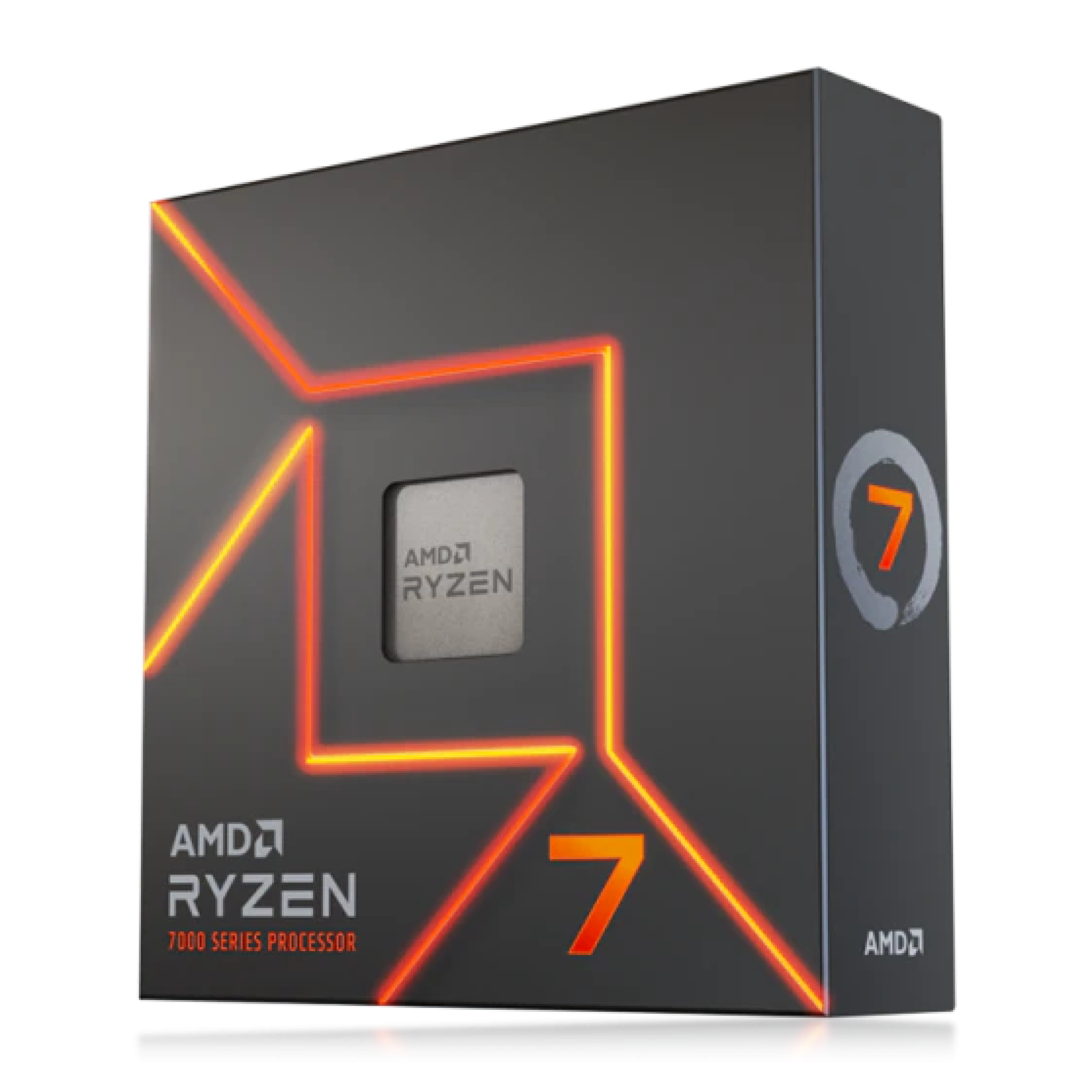
AMD Ryzen 7 7700X
Best balance between performance and price
The AMD Ryzen 7 7700X is one of the most powerful processors on the market right now, with 8 cores and 16 threads for top-tier desktop performance.
- Good gaming performance
- Better multi-threaded performance than the 7600(X) for not much more
- Efficient
- Not a great deal when the 7700 is in stock
Although Ryzen 7000s went on permanent sale late last year, they're still not cheap compared to Intel's 13th-generation counterparts. What makes choosing the right Ryzen CPU even harder is that there's a $100 gulf between AMD's 8-core 7700X and the 12-core 7900X, and the performance gap between these two CPUs is just as large. I've decided to go with the 7700X since the four extra cores won't really matter on a gaming PC and because the budget (which is already big) would be much higher with the 7900X.
The 7700X, at its core, is mostly an improved Ryzen 7 5700X or 5800X. It has the same core count and the same amount of L3 cache but uses the newer Zen 4 architecture and is produced on TSMC's 5nm node, which enables a much higher boost clock of 5.4GHz. Ryzen 7000 CPUs also support DDR5 and PCIe 5.0; however, not all 600 series motherboards are guaranteed to support PCIe 5.0 and may just go up to PCIe 4.0.
For gaming, the 7700X is actually pretty good and is about as fast as any other Ryzen 7000 non-X3D chip. It lags behind the Ryzen 9 7950X3D and the Ryzen 7 7800X3D, but unless you're gaming at 200 FPS or more, you probably won't see a performance difference. As for productivity, the 7700X isn't very impressive. The 7900X is about 50% faster in multi-core applications (not surprising since it has 50% more cores), but at least the single-threaded performance of the 7700X is about the same as other 7000 series CPUs.
If you want to save a little money, there's the Ryzen 7 7700 (without the X), and it has about the same performance as the 7700X for a supposedly cheaper price. I say "supposedly" because it's tough to find for much less than the 7700X at the time of writing. The 7700 becomes a worthwhile alternative when you're saving $20 or more.
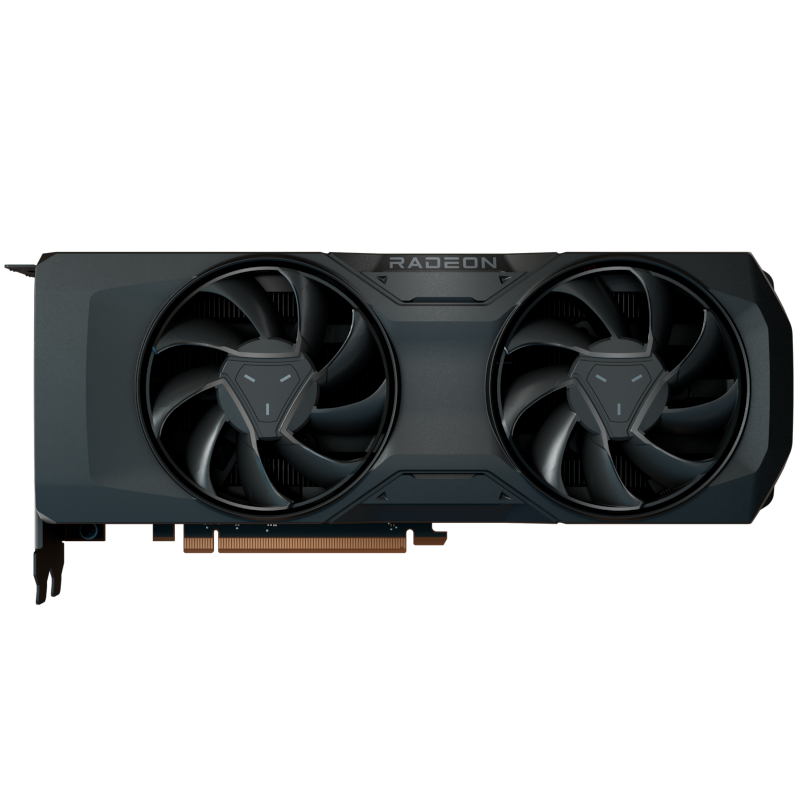
AMD Radeon RX 7800 XT
A good GPU, even if it's not groundbreaking
The king of AMD's RX 70 series graphics cards for 1440p gaming, this is the GPU you should buy if you're after butter-smooth 2K performance. The AMD Radeon RX 7800 XT is also fairly good at 4K gaming, especially when paired with FSR.
- Upper midrange performance
- HYPR-RX support
- 16GB of RAM
- Essentially a more efficient 6800 XT
- Slightly poorer ray tracing performance than rival Nvidia cards
The RX 7000 series is officially complete, but ultimately, all it has managed to accomplish is to replace the RX 6000 series with slightly improved, more efficient, or faster but pricier models. Previously, I recommended the RX 6800 XT for this build, and now I recommend the RX 7800 XT, which has the same $500 price tag, the same performance, and the same amount of VRAM. It's by no means the kind of upgrade we'd expect after three years, but it's better than the 6800 XT by a hair, and it only makes sense with the older card going out of stock.
The 7800 XT is about in the middle of the RX 7000 series, but in terms of performance, it's a very upper midrange or even high-end GPU with 60 CUs, as compared to the 72 CUs in the 6800 XT and the 84 CUs in the 7900 XT. Like the 7900 XT, it's built using chipsets, but its graphics chip is a different, smaller model, and it has four memory cache dies compared to the 7900 XT's five. With 16GB of VRAM, it's equal to the 6800 XT but has about 20% more bandwidth due to a roughly 20% higher memory clock speed.
When it comes to performance, the 7800 XT is basically just a 6800 XT, replacing it as the primary competition of the RTX 4070, which is just a tad slower in non-ray tracing settings and a little faster in ray tracing. The only new thing the 7800 offers is HYPR-RX support-RX, which combines Radeon Anti-Lag+, Radeon Boost, and Radeon Super Resolution. AMD also plans to add FSR 3 to HYPR-RX, which is supposed to work in every DX11 and DX12 game, and if that works out, then that will be a killer feature.
Overall, it doesn't really matter if you get the 7800 XT or the 6800 XT. They're basically the same GPU except for HYPR-RX. You might also consider getting the cheaper RX 7700 XT, which performs like the RX 6800 but has 4GB less VRAM. However, at around $450, its value is not as good as the 7800 XT or even the 6800 XT.
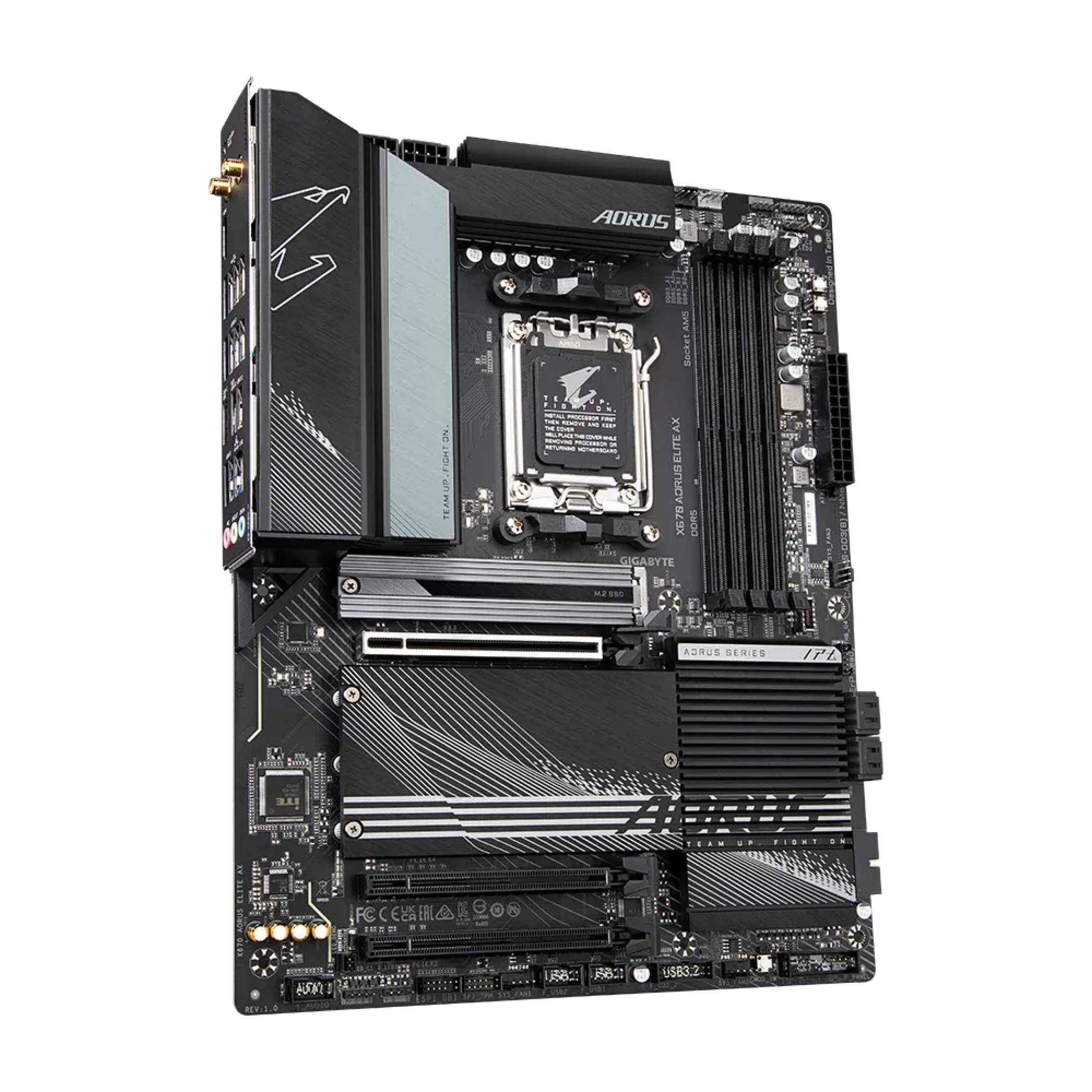
GIGABYTE X670 AORUS Elite AX
All the essentials
The Gigabyte X670 Aorus Elite AX has the essentials for a high-end gaming PC, including support for DDR5-6666 memory, four M.2 slots for SSDs (one of which supports PCIe 5.0), and a 16-stage VRM.
- Support for 6666MHz DDR5
- 16 phase VRM for high-end CPUs
- Four M.2 slots, one of which has PCIe 5.0 SSD support
- Realtek Ethernet instead of Intel Ethernet
AMD's new 600 series motherboards are more expensive than previous generation 500 series boards, which doesn't help the whole pricing issue Ryzen 7000 has, but that's only problematic for people on a tight budget. In the market's upper midrange to high-end segment, motherboards have a pretty good feature-to-price ratio, and Gigabyte's X670 Aorus Elite is one such option. At $270, it's not terribly expensive for what it offers, and it should provide a good foundation for a PC that you'll potentially upgrade many times down the line.
One of the Aorus Elite's biggest selling points is its robust 16+2+2 stage VRM, and although that's a bit overkill for the 7700X, it opens up the possibility of upgrading to the 7900X, 7950X, or a next-gen high-end Ryzen CPU. The other big selling point is M.2 slots; this motherboard has four. One of these slots is even PCIe 5.0 enabled, which is great if you're planning on picking up a PCIe 5.0 SSD in the future.
The rear I/O is also exceptional for the sub $300 segment. There are nine USB 3.2 ports (one of which is Type C Gen 2x2 for high data transfer rates) and four USB 2.0 ports, which almost ensures you'll never run out of room for peripherals. There's also a Wi-Fi 6 card on the AX model and 2.5 gigabit Realtek Ethernet (I'd rather have Intel but whatever).
Even more expensive and premium motherboards won't offer much more than the X670 Aorus Elite. Sure you could get an X670 or X670E board with PCIe 5.0 on the x16 slot for graphics or more PCIe 5.0 for SSDs or an extra M.2 slot or better Ethernet, but it's not worth it for a machine focused primarily on gaming. $270 for this motherboard is a pretty good deal, and I haven't found any other X670 motherboards that achieve this level of bang for your buck.
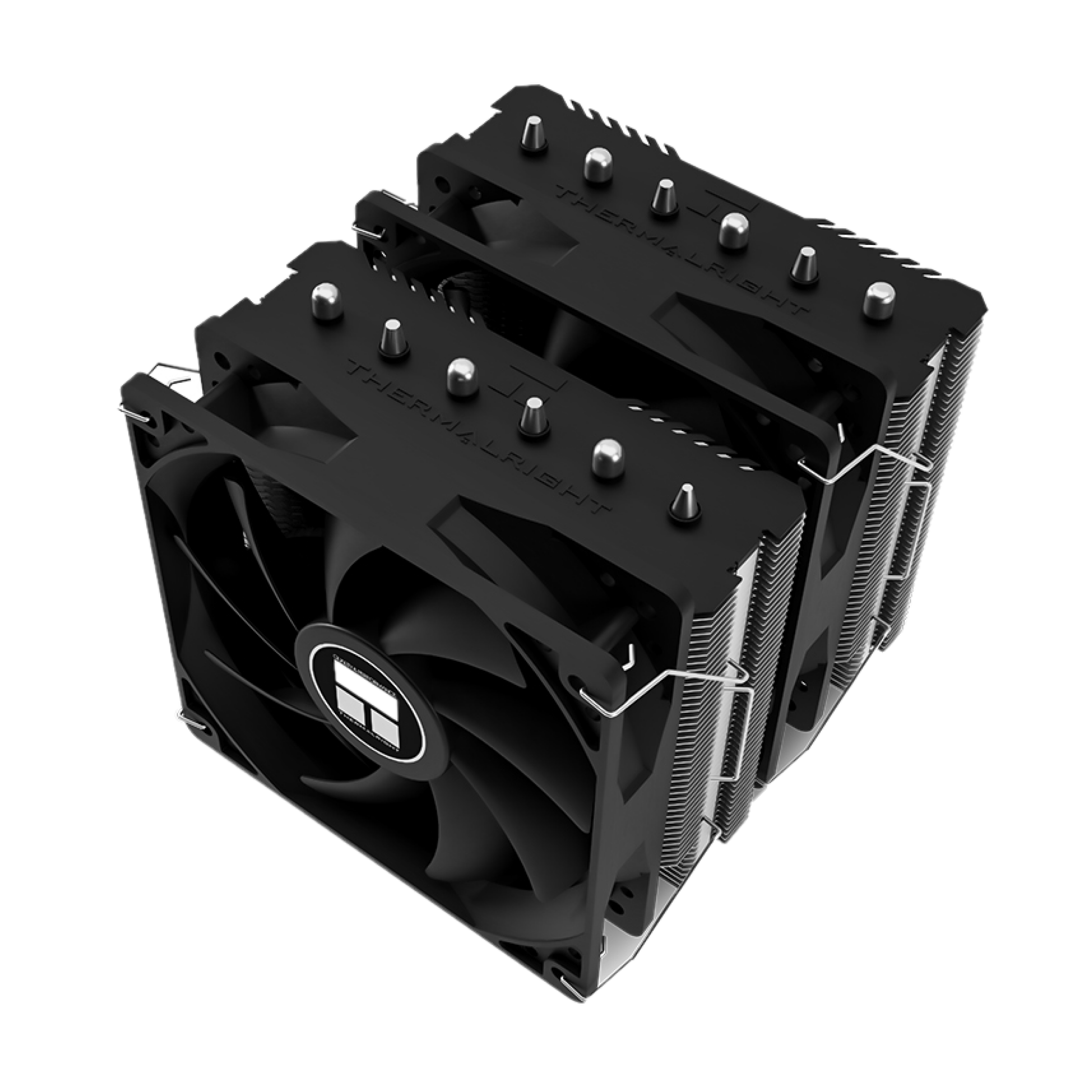
Thermalright Peerless Assassin 120 SE CPU Cooler
The unbeatable combo of being cheap and high-performance
Thermalright's Peerless Assassin 120 SE is a value-oriented CPU cooler that costs around $40 and offers six heatpipes and two 120mm fans.
- Incredibly cheap
- Top-end air cooling performance
- Takes up lots of space
One of the nicest things about the 7700X and other Ryzen CPUs is the power efficiency; these chips sip power. Generally, you won't care about power consumption on a desktop, but in this case, it means we can opt for a smaller, cheaper cooler, something you can't afford to do with Intel's 12th- and 13th-generation CPUs. Thermalright's $40 Peerless Assassin 120 SE cooler is good for Ryzen 7000 in general and helps keep the budget under control for this build.
Although Thermalright is a newcomer to the CPU air cooling scene, it's already positioned itself as not only the leading brand for value but also performance. More established brands like Noctua and Arctic have great coolers for much higher prices. The Peerless Assassin matches top-end coolers like Noctua's NH-D15 for less than half the price. Until other brands adjust the cost, there's really no reason to get any other CPU cooler than the Peerless Assassin (or one of Thermalright's other equally well-priced options).
The $40 price tag is already a pretty small investment for a cooler, but since the 7700X is so power efficient, you could save a little more by opting for Thermalright's Assassin King 120 SE, which is basically a Peerless Assassin cut in half for $20. On the other hand, if you think you'll want to upgrade your CPU, grabbing a 360mm or 420mm AIO liquid cooler such as Arctic's Liquid Freezer II might be a good idea, though it'll cost you $100 at minimum, and probably closer to $200.
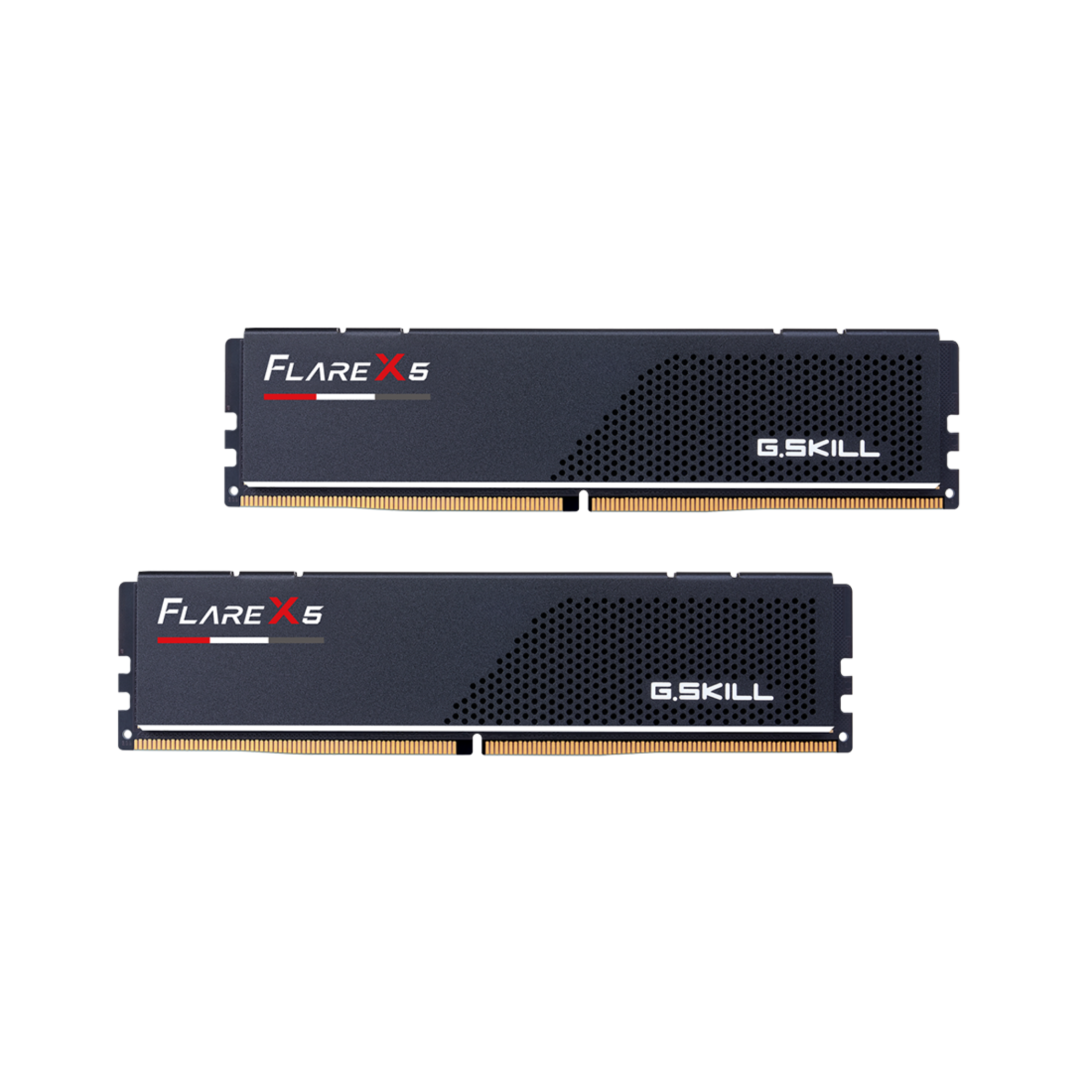
G.Skill Flare X5 Series
Specifically made for Ryzen CPUs
G.Skill's Flare X5 Series is DDR5 memory specifically made for Ryzen CPUs and comes with an EXPO memory profile. Various models are rated anywhere from 5200MHz to 6000MHZ.
- High-end frequency and CAS latency
- Not particularly expensive for its capacity and performance
- Low profile heatsinks
- Objectively expensive
DDR5 is the newest standard, but it's almost two years old, so there are plenty of choices available. However, DDR5 usually only comes in kits of 32GB, and it's already much more expensive than DDR4 per gigabyte, so it's important to choose a good kit that's worth the money. With support for AMD EXPO (basically XMP for Ryzen) and good performance, G.Skill's Flare X5 Series is probably the best DDR5 you can buy for Ryzen CPUs.
Like with most memory kits, Flare X5 comes in different combinations of frequency and CAS latency (CL). The specific kit I recommend is the 32GB one rated at 6000MHz and CL36, which isn't quite the highest-end kit but costs around $120, which is pretty good for DDR5 in the current market. Other than the solid performance and relatively low price of the Flare X5, there's also the fact that the heatsinks are low-profile, which can be an issue for some coolers. There's also no RGB, which might be a pro or a con, depending on your preferences.
Since DDR5 is one of the most expensive items for any Ryzen PC build, you might decide that the Flare X5 series is just too expensive. If that's the case, and you're looking for alternative memory, keep a few things in mind. Firstly, 32GB isn't necessary for gaming, so getting a 16GB kit is perfectly fine. Secondly, no matter the capacity, always get two sticks since running with just one results in lower performance. Finally, try and get a kit that at least has a frequency of 5200MHz and CL40; anything worse than that shouldn't really be in a high-end PC.
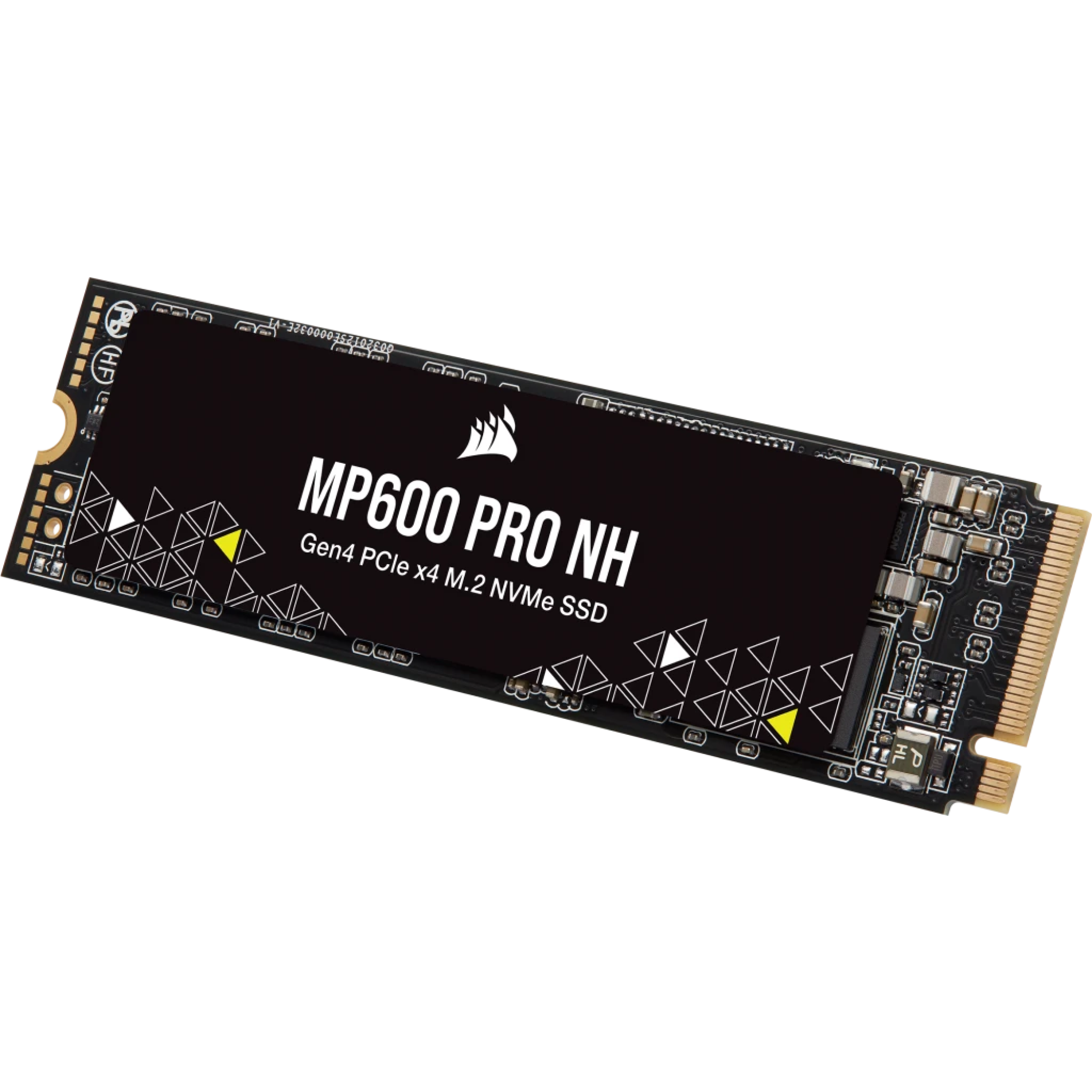
Corsair MP600 Pro NH
One of the fastest and most affordable SSDs
Corsair's MP600 Pro NH is the company's flagship PCIe 4.0 SSD and one of the fastest (if not the fastest) PCIe 4.0 drives you can buy. It comes in several different sizes: 500GB, 1TB, 2TB, 4TB, and 8TB.
- Top-end PCIe 4.0 SSD
- Affordable
- Many different sizes to choose from
- Gets very hot under load
SSDs are currently the cheapest they've ever been, down about half what they normally cost. A high-end 1TB PCIe 4.0 SSD only costs about $70 or $80, like the Corsair MP600 Pro NH. This SSD can claim to be one of the fastest PCIe 4.0 SSDs out there, and at $65 at the time of writing, it's an incredibly cheap SSD for what you're getting.
Although the MP600 Pro NH is rated at 7,000MB/s reads and 5,700MB/s writes on the 1TB and 2TB models, in my review, I found that this drive hits closer to 7,500MB/s and 7,100MB/s in sequential workloads, a massively higher figure. Random performance is also quite good, putting it above Samsung's 990 Pro and on par with higher-end PCIe 5.0 SSDs. Not bad for being priced like a more midrange SSD.
The only thing you really need to worry about with the MP600 Pro NH is its high amount of heat output, which is on par with PCIe 5.0 SSDs. Thankfully, the Gigabyte X670 Aorus Elite has M.2 heatsinks that can handle the MP600 Pro NH and ensure it performs. While I recommend the 1TB model, you might want more storage, and the 2TB model at $100 or so is a better value than the 1TB model. You could also just grab a cheap SSD on the side, like the P41 Plus from Solidigm, to save money.
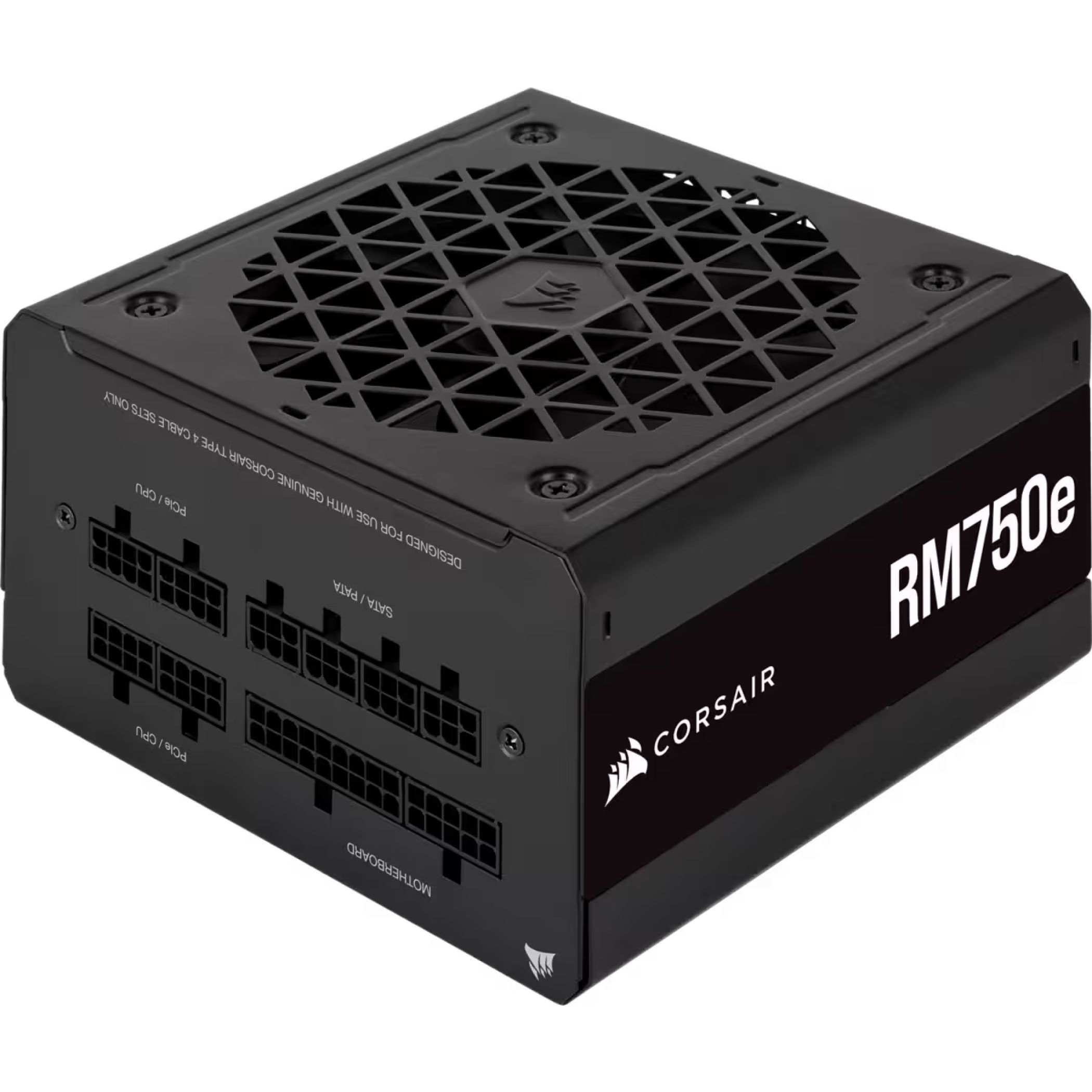
Corsair RM 750e
A modern ATX 3.0 PSU with lots of power behind it
Corsair's RM750e PSU is 80 Plus Gold rated, comes with modular cables, and supports up to 750W, which is enough for most mid-range to high-end PCs.
- ATX 3.0 support
- 750W
- 80 Plus Gold rating
- A bit more expensive than other 750W PSUs
The power supply is perhaps the component in your PC that'll be around the longest, and it's important that a PSU for a high-end PC can handle current and future components that might consume lots of power. I recommend Corsair's RM750e ATX 3.0 PSU, which has pretty much all the power you'd need, even for the highest-end components, as long as you stick to Ryzen.
With 750W, an 80 Plus Gold efficiency rating, and ATX 3.0 support, the RM750e is built for high-end PCs and modern components, which is what you want from a PSU that you'll want to keep for years. PSUs aren't just about the technical specifications, though, as the brand behind them tells you a lot about quality and reliability. Thankfully, Corsair is one of the best brands for PSUs and has been in the game for over a decade, so you can trust that the RM750e won't fry your PC.
It may be more expensive than other good PSUs with similar specifications, such as Thermaltake's Toughpower 750W, but at $100, the RM750e is a fair price. For a $1,500 PC, it's worth spending an extra $20 for ATX 3.0 support. Plus, the RM750e seems to be pretty consistently at $100, which is good since many other models tend to fluctuate in price from time to time.
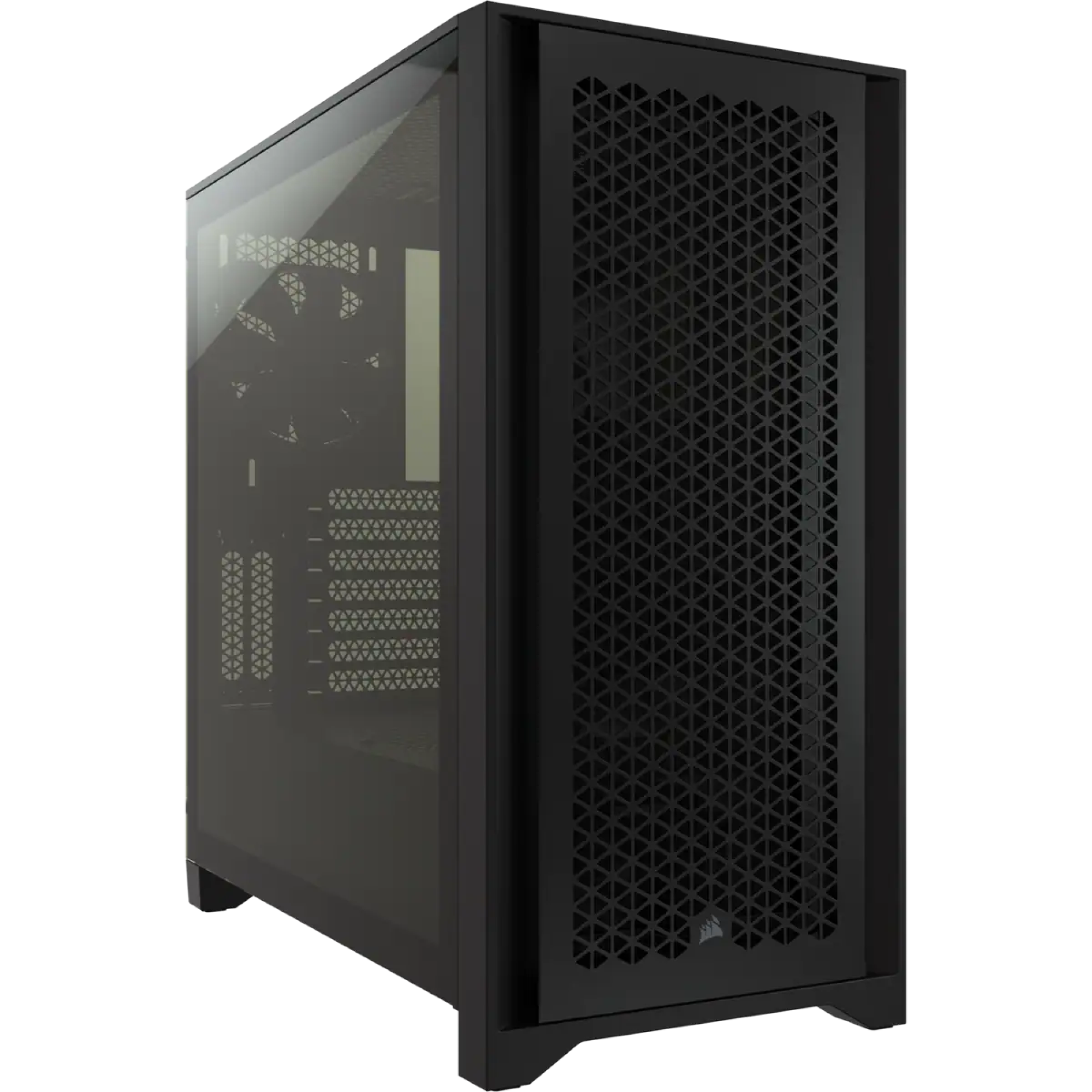
Corsair 4000D Airflow
Balance between performance and value
The Corsair 4000D AIRFLOW is one of the best airflow cases you can buy to have a full front-to-back airflow for your components. It comes pre-installed with two RGB 120mm fans.
- Good front intake airflow
- Support for 360mm radiators
- Tempered glass side panel
- Only two included fans
The case is the most customizable part of this build, and as long as everything is compatible, it's your choice as to what case you go with. There's almost an endless supply of cases, each unique in its own way. For this build, we recommend an upper midrange or high-end case like Corsair's 4000D Airflow, which costs just under $100 and provides everything you need for the build I've recommended. Plus, it features some upgrades for down the line.
The 4000D is definitely function over form. It comes in solid black or white with gray accents and no RGB. You can get versions of both themes with three RGB fans in the front if you desperately need some color in your PC, but these versions cost an extra $50 or so. Both colors also come with a tempered glass side panel; the one on the black model is tinted dark, while the one on the white model isn't tinted at all.
The main reason I'm recommending the 4000D Airflow here is its focus on airflow (hence the name). The front panel is perforated and comes with a dust filter, which is crucial for good intake airflow. Additionally, there's support for a 360mm radiator at the front and a 240mm or 280mm radiator on the top, and although I haven't recommended a liquid cooler for this build, it's nice having the option to switch to one if you want or need to. The 4000D's only disappointing quality is that it comes with just two fans; we recommend picking up a couple more for the front intake.
You don't have to get the 4000D Airflow if it's not to your liking, but try and get a chassis that's similar to it. The ideal case for this kind of build will have room for a 360mm radiator, good intake and exhaust airflow, a dust filter for the main intake, and generally good build quality. You should check our recommendations for cases with great airflow and mid-tower chasses if you're not sold on the 4000D.
Premium AMD PC build guide: Price breakdown
Here's a quick breakdown of the pricing for this particular build. It goes without saying that the prices are subject to change based on the availability of each component. The 7700X seems to vary in price more than other CPUs and has sometimes been seen for as little as $310. The RAM and SSD may also increase in price in the long term due to the changing market, but this may be more true for SSDs than for DDR5 RAM.
|
Component |
Listed Price |
|---|---|
|
AMD Ryzen 7 7700X processor |
$334 |
|
AMD Radeon RX 7800 XT GPU |
$500 |
|
Gigabyte X670 Aorus Elite motherboard |
$280 |
|
Thermalright Peerless Assassin 120 SE |
$35 |
|
G.Skill Flare X5 Series 32GB |
$94 |
|
Corsair MP600 Pro NH 1TB |
$65 |
|
Corsair RM750e PSU |
$100 |
|
Corsair 4000D Airflow mid-tower case |
$89 |
|
Total |
$1,497 |
With a little bit of luck, you should be able to assemble this exact PC or something like it for just around $1,500. For gaming, it's hard to ask for anything more without seriously increasing the budget, and it's not necessary to buy the RTX 4090 or RX 7900 XT/XTX if you want a high-end or upper-midrange experience. But the GPU isn't the only factor in the budget here — Ryzen CPUs, AMD 600 series motherboards, and DDR5 RAM are expensive. For comparison, we built an Intel gaming PC with higher productivity performance for $100 less, with basically the same gaming performance.
Peripherals are also important to consider for both the gaming experience and the budget of your entire gaming setup. However, since they're outside the PC itself, I'm not making any suggestions within this guide. However, we have separate lists for the best mice, keyboards, and headsets if you're getting more than just a new PC. Additionally, you can join the XDA Computing forums if you want a second opinion.
